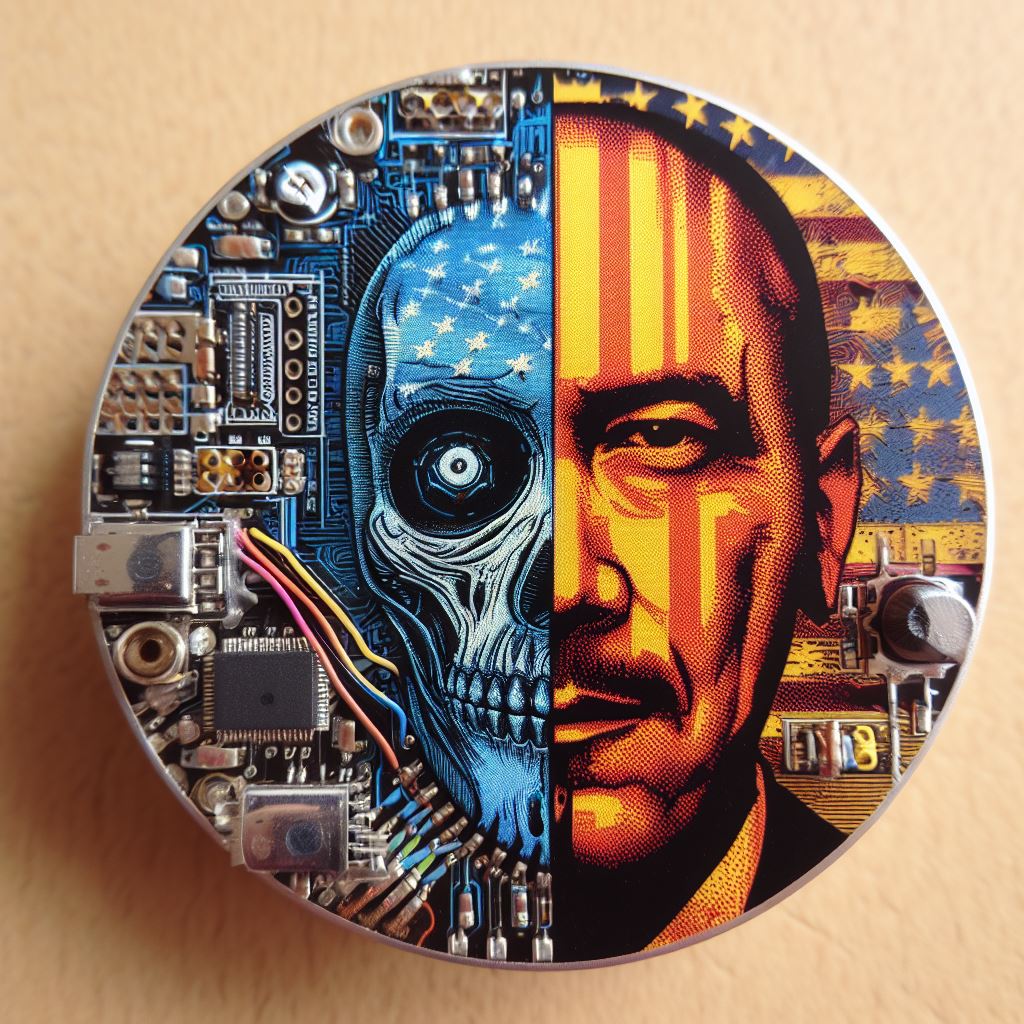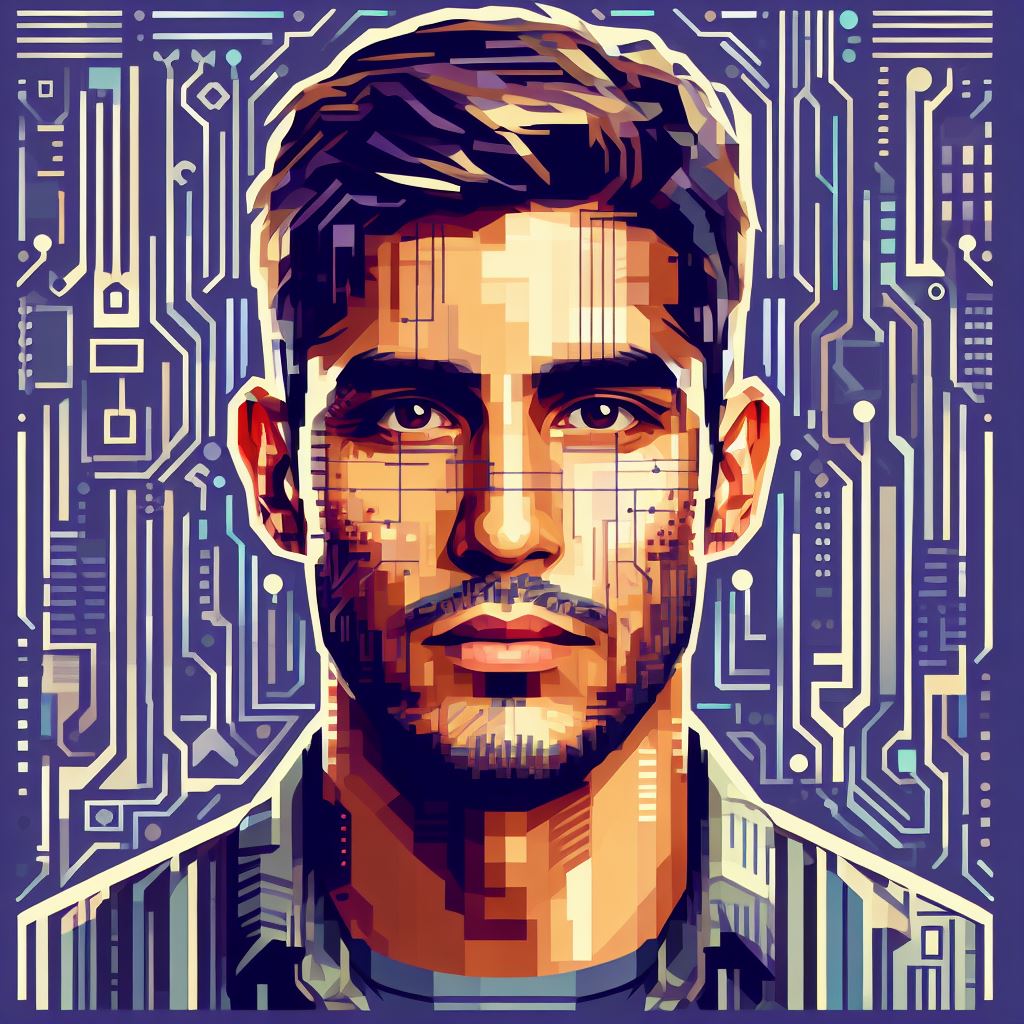Introduction
The world of mobile development has seen a significant rise in popularity in recent years.
As more and more people rely on smartphones and tablets for their daily tasks, the demand for innovative and user-friendly mobile apps has skyrocketed.
This growing trend has paved the way for the emergence of exciting technologies such as Dart and Flutter.
Dart is a programming language developed by Google, known for its simplicity and efficiency.
It offers a wide range of features that make mobile app development faster and more productive.
Flutter, on the other hand, is an open-source user interface (UI) framework built with Dart.
It allows developers to create visually appealing and high-performance apps for multiple platforms using a single codebase.
The potential impact of Dart and Flutter on the mobile development industry cannot be overstated.
With their advanced features and cross-platform capabilities, developers can now build apps for Android, iOS, and even web platforms using a single codebase.
This significantly reduces development time and costs while ensuring consistent quality across different devices.
Moreover, the hot-reload feature in Flutter enables developers to make instant changes to the app’s code and see the results immediately, speeding up the development process.
Additionally, the rich set of pre-built UI components offered by Flutter minimizes the need for manual coding, further enhancing productivity.
In essence, Dart and Flutter have emerged as powerful tools for mobile development, offering simplicity, efficiency, and cross-platform capabilities.
As the demand for innovative and user-friendly mobile apps continues to grow, these technologies have the potential to reshape the future of the mobile development industry.
Developers who embrace Dart and Flutter can stay ahead of the curve and deliver cutting-edge apps to meet the evolving needs of users.
Tech Consulting Tailored to Your Coding Journey
Get expert guidance in coding with a personalized consultation. Receive unique, actionable insights delivered in 1-3 business days.
Get StartedWhat is Dart?
Brief explanation of Dart programming language
Dart is an object-oriented, class-based language developed by Google, mainly used for building mobile, web, and desktop applications.
It is designed to be easy to learn, fast, and efficient.
History and development of Dart
The development of Dart started in 2011 with the goal of addressing some of the limitations of JavaScript.
It was officially announced by Google in 2013 as a new language for web development.
Key features and advantages of Dart
- Strong typing: Dart is a statically typed language, which ensures code reliability and helps catch errors during compilation.
- Efficient performance: Dart provides Just-in-Time (JIT) and Ahead-of-Time (AOT) compilation, resulting in faster app startup and execution.
- Object-oriented: Dart supports class-based object-oriented programming, making it easier to organize and structure code.
- Asynchronous programming: Dart has built-in support for asynchronous programming, which allows developers to write efficient and responsive apps.
- Hot Reload: Dart’s Hot Reload feature enables developers to make changes to code during runtime, speeding up the development process.
- Flutter integration: Dart is the primary language used for Flutter app development, making it seamlessly compatible with the Flutter framework.
How Dart can be beneficial for mobile app development
With its features and advantages, Dart proves to be highly beneficial for mobile app development:
- Dart’s strong typing helps in identifying and preventing errors early in the development process, ensuring a stable and reliable app.
- The efficient performance of Dart apps results in smooth user experiences and faster app loading times.
- Object-oriented programming in Dart allows for better code organization and maintainability, leading to scalable and extensible apps.
- Asynchronous programming in Dart simplifies handling network requests, allowing developers to create responsive and interactive mobile apps.
- The Hot Reload feature in Dart accelerates the development cycle by providing instant feedback and reducing time spent on code modifications.
- Dart’s integration with Flutter makes it a powerful combination for cross-platform app development, reducing development efforts and ensuring a native-like experience.
Overall, Dart’s ability to enhance development speed, code quality, and performance makes it a promising language for the future of mobile app development.
Read: Why Groovy Is Still Useful in the Age of Java
What is Flutter?
Brief explanation of Flutter framework
- Flutter is an open-source UI software development kit created by Google for building apps.
- It allows developers to write code once and deploy it on both iOS and Android platforms.
- Flutter uses the Dart programming language, which is also developed by Google.
History and development of Flutter
- Flutter was first unveiled by Google at the Dart developer summit in October 2015.
- Initially, it was intended for developing apps on Android, but later expanded to include iOS.
- Flutter has quickly gained popularity among developers due to its simplicity and performance.
Key features and advantages of Flutter
- Hot Reload: Flutter provides a feature called hot reload, which allows developers to see changes instantly without restarting the app.
- Widgets: Flutter uses a widget-based architecture, making it easy to create and customize UI elements.
- Fast Performance: Flutter’s code is compiled directly into native machine code, resulting in fast and smooth performance.
- Platform Agnostic: With Flutter, developers can build apps that look and feel like native apps on both iOS and Android.
- Rich UI: Flutter offers a wide range of pre-designed widgets that can be easily customized to create stunning user interfaces.
Potential for building high-quality, cross-platform applications
- Flutter provides a single codebase for developing apps that can run on multiple platforms.
- It reduces development time and effort, as developers don’t need to write separate code for each platform.
- Flutter’s hot reload feature allows for faster iteration and testing, leading to quicker development cycles.
- By leveraging Flutter’s rich set of widgets and UI customization options, developers can create high-quality, visually appealing apps.
- Flutter’s performance and native-like experience make it an ideal choice for building cross-platform applications.
Read: Top Minimalistic Coding Wallpapers for a Clean Setup
Integration of Dart and Flutter
Dart as the Programming Language Used in Flutter Development
Dart is the primary programming language utilized in Flutter development, providing a solid foundation for building mobile applications.
Using Dart with Flutter allows developers to write code that is easy to read, write, and maintain.
The language offers a wide array of features such as garbage collection, strong typing, and just-in-time compilation.
Dart’s familiar syntax and structure make it accessible to developers from various programming backgrounds, enhancing productivity.
Benefits of Using Dart with Flutter
The integration of Dart with Flutter brings numerous advantages for mobile application development.
Firstly, Dart offers a performant and efficient runtime system, enabling speedy execution of Flutter applications.
Build Your Vision, Perfectly Tailored
Get a custom-built website or application that matches your vision and needs. Stand out from the crowd with a solution designed just for you—professional, scalable, and seamless.
Get StartedThis contributes to a smooth user experience with fast rendering and responsiveness.
Furthermore, Dart’s just-in-time compilation allows for quicker development cycles by enabling hot reloading.
Developers can instantly view their code changes without restarting the application, resulting in enhanced productivity.
Another benefit lies in Dart’s support for reactive programming, making it easy to implement reactive components in Flutter.
This enables developers to create interactive UIs with ease, providing a superior user experience.
Moreover, Dart’s extensive set of libraries simplifies the development process by providing ready-to-use solutions for common tasks.
These libraries enable developers to save time and effort by leveraging existing code, thereby accelerating development speed.
Additionally, Dart’s strong typing system aids in reducing runtime errors and enhancing code reliability.
By catching errors at compile-time, developers can identify and rectify issues early in the development cycle, resulting in stable applications.
Seamless Integration Between Dart and Flutter for Mobile App Development
The integration between Dart and Flutter offers a seamless development experience, resulting in efficient mobile app creation.
Developers can utilize Flutter’s rich set of UI components and Dart’s powerful language features to build visually appealing and responsive applications.
This combination allows for the creation of stunning user interfaces and smooth animations, enhancing the overall user experience.
Dart’s reactive programming model integrates flawlessly with Flutter’s widget-based architecture, allowing for easy state management.
This ensures that the application’s data and UI remain synchronized, leading to intuitive and reactive user interfaces.
Optimize Your Profile, Get Noticed
Make your resume and LinkedIn stand out to employers with a profile that highlights your technical skills and project experience. Elevate your career with a polished and professional presence.
Get NoticedFurthermore, Dart’s extensive tooling ecosystem, including IDEs like Visual Studio Code and IntelliJ, provides robust support for Flutter development.
Developers can benefit from features like code completion, debugging, and refactoring, simplifying the development process.
The seamless integration between Dart and Flutter also extends to package management.
The Dart Package Manager (Pub) enables developers to conveniently manage dependencies and incorporate third-party libraries into their applications.
In short, Dart’s integration with Flutter offers a powerful combination for mobile app development.
By utilizing Dart as the programming language, developers can leverage its performance, efficiency, and ease of use.
Furthermore, the seamless integration between Dart and Flutter enables the creation of visually stunning and responsive applications.
Overall, Dart and Flutter provide a promising future for mobile development, empowering developers to build high-quality applications efficiently.
Read: Is HTML and CSS Enough for Front-End Development?

Advantages of Dart and Flutter for Mobile Development
In this section, we will explore the various advantages of using Dart and Flutter for mobile development.
The combination of these technologies offers a range of benefits that make them a compelling choice for building mobile applications.
Fast development and hot reload features
Dart and Flutter provide developers with the ability to quickly develop and iterate on mobile applications.
The hot reload feature allows for instant updates to the app’s UI, reducing development time and enabling faster prototyping.
Expressive UI and native performance
Flutter’s UI framework empowers developers to create expressive and visually appealing user interfaces.
Additionally, Flutter’s performance is comparable to native applications, ensuring smooth and responsive user experiences.
Cross-platform capabilities
One of the significant advantages of Dart and Flutter is the ability to build cross-platform applications.
With a single codebase, developers can target iOS, Android, and even the web without sacrificing performance or design.
Rich set of libraries and community support
Dart and Flutter come with a comprehensive set of libraries that streamline development and offer ready-to-use solutions for common tasks.
Moreover, the vibrant community around Dart and Flutter provides support, documentation, and a vast collection of open-source packages.
Integration with existing codebases
Dart’s ease of integration allows developers to leverage existing codebases written in Java, Swift, or Objective-C.
Flutter’s platform channels enable seamless communication between Dart and native code, providing flexibility for integrating with legacy systems.
Simplified testing and debugging process
Dart and Flutter offer powerful testing and debugging tools that simplify the mobile development process.
The framework’s built-in widget testing framework and debugger aid in identifying and rectifying issues, ensuring the app’s quality before deployment.
In general, Dart and Flutter provide numerous advantages for mobile development.
The fast development and hot reload features, expressive UI, and native performance make them a productive choice for building mobile applications.
Additionally, the cross-platform capabilities, rich libraries, and community support enable developers to create robust and feature-rich apps.
The ability to integrate with existing codebases and the simplified testing and debugging process further enhance the development experience.
Overall, Dart and Flutter offer a compelling future for mobile development.
Read: MATLAB for Engineers: Is It Still the Best Choice?
Use cases and Success Stories
Dart and Flutter have proven their worth in the mobile development space, empowering developers to create high-quality apps for a variety of industries.
Let’s dive deeper into some successful mobile apps developed using Dart and Flutter and explore real-world use cases.
Successful mobile apps developed using Dart and Flutter
- Reflectly: This personal journal app, with over millions of downloads, showcases the power of Dart and Flutter in creating a beautiful user interface and exceptional user experience.
- Alibaba Xianyu: One of the world’s largest e-commerce platforms developed their app using Dart and Flutter, ensuring performance and scalability for millions of users.
- Google Ads: The Google Ads app is another example of Dart and Flutter’s ability to handle complex functionalities while delivering a smooth and intuitive user interface.
Real-world use cases where Dart and Flutter excelled
- Banking and Finance: Dart and Flutter provide a secure and efficient platform for building banking and finance apps with features like transaction tracking, account management, and secure login/authentication.
- Education: Dart and Flutter allow developers to create interactive and engaging educational apps with features such as quizzes, multimedia content, and progress tracking.
- Healthcare: Flutter’s fast development capabilities allow for the efficient creation of telemedicine apps, patient management systems, and health monitoring solutions.
Potential of Dart and Flutter in various industries
- Retail and E-commerce: Flutter’s native performance enables the creation of visually appealing shopping apps with smooth animations and seamless user experience.
- Travel and Tourism: Dart and Flutter can be leveraged to build travel booking apps with stunning UI, real-time flight tracking, and seamless payment integration.
- Entertainment and Media: Flutter’s ability to handle media playback and navigate complex content structures makes it ideal for developing media streaming apps with rich features.
In review, Dart and Flutter have transformed the mobile development landscape by providing developers with a powerful toolset to create successful and feature-rich apps.
The success stories of Reflectly, Alibaba, and Google Ads highlight the capabilities of Dart and Flutter in building robust and scalable applications.
Additionally, the vast potential of Dart and Flutter in industries like banking, education, healthcare, retail, travel, and entertainment demonstrates their versatility and adaptability.
With Flutter’s native performance, hot reload, and expressive UI framework, Dart and Flutter are undoubtedly the future of mobile development.
Challenges and Limitations
Limitations or challenges developers may face with Dart and Flutter
Despite the numerous advantages of using Dart and Flutter for mobile development, developers may encounter certain challenges and limitations.
One common hurdle is the learning curve associated with Dart’s syntax and features, which can pose difficulties for developers transitioning from other programming languages.
Additionally, the limited tooling and ecosystem compared to more mature languages may result in fewer available libraries and tools, potentially slowing down development processes.
Another challenge developers face is the lack of third-party support for Dart and Flutter.
While the community is growing rapidly, it may be challenging to find ready-made solutions or integrations for specific requirements.
Inconsistent documentation can also be an issue, as developers may struggle to find up-to-date and accurate information in the official documentation.
Potential compatibility issues or platform-specific constraints
In terms of compatibility, Flutter’s UI may not perfectly match the native look and feel of each platform.
Although it uses its own rendering engine, slight differences in UI/UX design may occur.
Furthermore, access to device-specific hardware features and APIs may be more limited compared to native development, potentially restricting certain functionalities.
Flutter apps also tend to have larger file sizes compared to native apps due to the need to bundle the entire Flutter framework with the application.
This may impact the app’s download and install times.
Moreover, some developers have reported challenges in getting their Flutter apps approved on certain app stores due to platform-specific guidelines and requirements.
Known performance issues and efforts to improve them
In terms of performance, Flutter apps may experience slightly longer start-up times compared to native apps as the Flutter framework needs to be initialized.
Although Flutter’s overall performance is generally excellent, complex UI animations or heavy computations can still encounter occasional frame rate drops.
However, the Flutter team actively works on optimizing the framework’s performance through regular updates and feature enhancements.
The community also contributes to identifying and solving performance-related issues, further improving the overall performance and usability of Dart and Flutter.
Despite these challenges and limitations, Dart and Flutter continue to gain popularity in the mobile development world due to their cross-platform capabilities and productive development workflow.
Conclusion
Dart and Flutter have the potential to revolutionize the field of mobile development.
By utilizing Dart’s strong typing and Flutter’s easy-to-use UI toolkit, developers can create highly performant and visually appealing applications.
The advantages of using Dart and Flutter are numerous.
The hot reload feature allows for rapid development and debugging, while the single codebase facilitates code maintenance and reduces development time.
It is highly recommended for developers to explore and consider Dart and Flutter for their mobile development projects.
With a growing community and continuous updates, Dart and Flutter offer a promising future for mobile app development.




